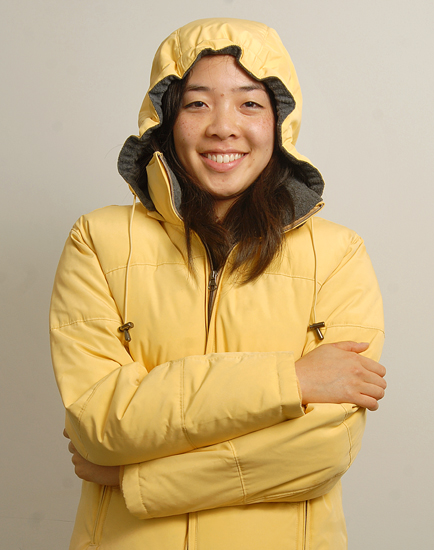Researching the impact of melting ice sheet in Greenland

Graduate student Vena Chu will be conducting research in Greenland this summer on the impact of the melting ice sheet on the world’s oceans.
By Sarah Khan
June 6, 2010 11:08 p.m.
The first time Vena Chu drove a stick shift car was two years ago on a narrow cliff side road in Greenland, heading toward a four- or five-story-tall sheet of pure ice.
The run-down truck was the only form of transportation Chu, a doctoral student in geography, and her research team used for travel in Greenland while studying the melting ice sheet and its impact on the world’s oceans, she said.
Worldwide, the sea level is rising at a rate of about 2 to 3 millimeters a year, said Larry Smith, principal investigator of the project, who taught Chu how to drive the truck. Melting glaciers are a significant contribution to that figure, he said.
“(One of) the big questions we have in the 21st century is to understand the potential impact of the Greenland ice sheet on global sea level,” said Asa Rennermalm, a former postdoctoral scholar at UCLA who has been working with Chu and traveled with her several times.
Although the glaciers melt very slowly, even a half-meter increase in the world’s sea level could increase the risk of flooding for coastal cities, Rennermalm said.
Chu’s research focuses on taking more accurate measurements of glacier water runoff, he said.
“At the moment, we only model and estimate the runoff using the surface of the ice sheet,” Smith said. “But we actually don’t know how much of that melt water actually escapes into the ocean.”
For the past two years, Chu has traveled to Greenland to conduct research on the edge of the ice sheet. She then directly measures the depth change of rivers that are being affected by glacial water.
This summer, she is going to Greenland again to continue her measurements.
Data like Chu’s may soon be used to mathematically model the rising sea levels more accurately to make predictions about its behavior, Rennermalm said.
One of the most direct ways to do this is to hammer large pressure detector rods into the ground, which measure the water’s depth. From there, it is possible to discern the volume of discharge coming from the ice sheet, Chu said.
“We’re measuring the meltwater directly,” Rennermalm said. “That’s a very important piece of the puzzle, to understand how it’s responding to climate change and global warming.”
Chu is also using satellite imagery to track water flowing from the land into the ocean. The runoff water is muddy in color, which makes it easy to differentiate from the ocean water and thus easy to track, she said.
The group is one of only a handful of others who use such techniques for measuring melt water, Rennermalm said.
Chu and her team of researchers drive a few hours from the nearest town to get to their site and camp on the land bordering a towering sheet of moving, crumbling ice.
“We camp on the edge of the ice sheet, on the land, and it’s the most beautiful thing ever,” Chu said. “We get to see the edge of the glacier.”
Although wild animals, nearly freezing temperatures and moving glaciers can make the Greenland terrain a dangerous place, Chu has had her share of rewarding experiences to make up for it.
Seeing snow fall for the first time was one of those experiences. She and Rennermalm were in Greenland last August, driving up a large hill. As they reached higher elevations, the snow fell more heavily, and eventually their truck was unable to ascend any further.
As night approached and the temperature dropped, they got out of the car and started walking towards the edge of the ice sheet in the falling snow.
“Asa was afraid that we’d get snowed in up there, but I was excited because it was so beautiful,” Chu said. “It was grey and stormy and dark, but it was amazing.”


